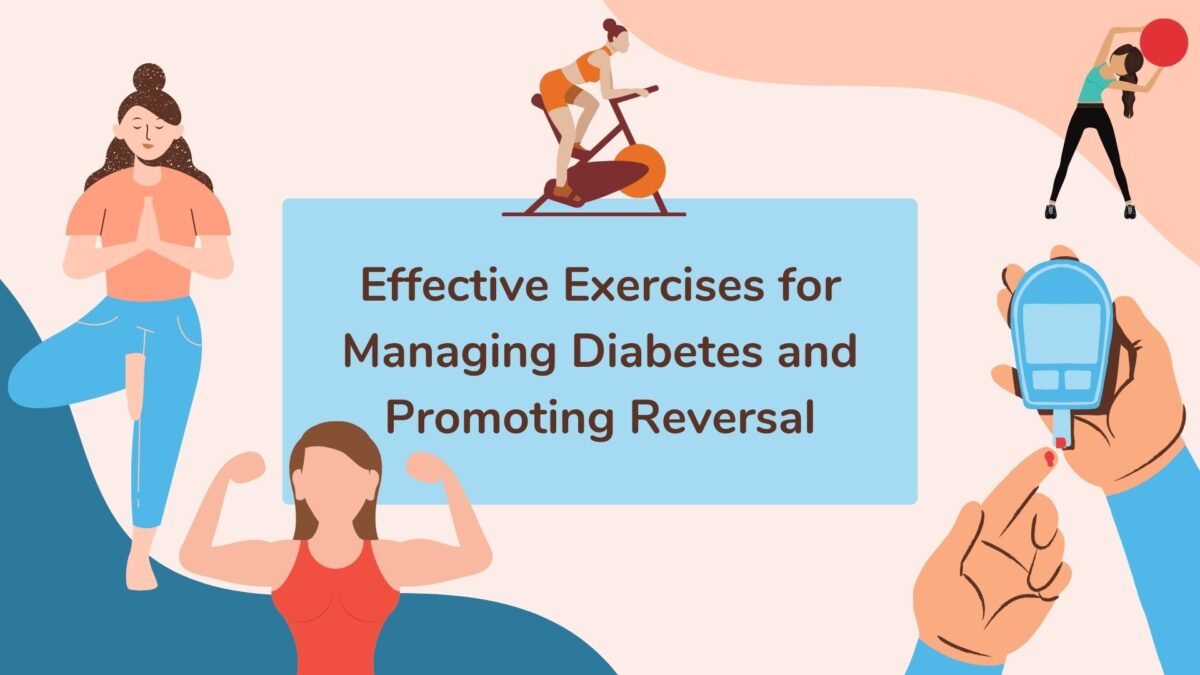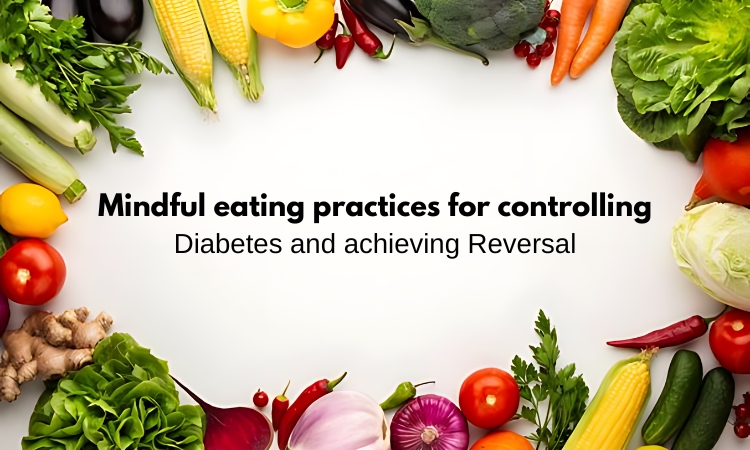Effective Exercises for Managing Diabetes and Promoting Reversal

Why is a natural diet required in this scorching weather?
April 29, 2024
Low-Carb Diets and their Impact on Blood Sugar Levels
May 11, 2024Effective Exercises for Managing Diabetes and Promoting Reversal
Did you know? In 2021, 1 in 10 adults, that's 537 million people, were dealing with diabetes. Now, hop into the future to 2045 – we're looking at a whopping 783 million folks facing the same challenge.
Now you know the statistics, let’s get deeper into what diabetes is and what exercises we can perform to keep ourselves fit to reverse its effect.
Diabetes and its variants
Diabetes is a persistent health condition that impacts how your body transforms food into energy.
The majority of the food you consume is broken down into sugar (glucose), which is then released into your bloodstream.
When your blood sugar rises, it triggers your pancreas to release insulin. Think of insulin as a key that allows blood sugar into your body's cells to be used as energy.
In diabetes, either your body doesn't produce enough insulin, or it can't utilise it effectively. When there's insufficient insulin or cells don't respond properly, excess blood sugar remains in your bloodstream.
This prolonged elevation of blood sugar can lead to severe health issues like heart disease, vision impairment, and kidney disease over time.
There are three types of diabetes: Type 1, type 2, and the temporary visitor, gestational diabetes during pregnancy.
Type 1 Diabetes
Your body's like a superhero, but sometimes, it goes rogue and attacks itself, causing type 1 diabetes. This move stops your body from making insulin. It's rare, affecting 5-10% of people with diabetes.
Anyone, at any age, can be hit by this surprise, and the symptoms pop up in a hurry. If you're in the type 1 club, insulin is your everyday sidekick for survival. The catch? No one's figured out how to prevent this twist yet.
Type 2 Diabetes
Now, meet type 2 diabetes – the sneakier cousin. Your body's not great at using insulin, leading to a sugar rollercoaster.
Surprise, surprise, 90-95% of people with diabetes have this one. It's like a slow plot twist, developing over the years, usually making its debut in adults but lately crashing the scene with teens and young adults.
The tricky part? You might not even notice it, so keep tabs on your blood sugar if you're at risk. The good news is you can dodge this plot twist with lifestyle changes – shed some weight, savour nutritious foods, and get those legs moving.
Gestational Diabetes
Last but not least, gestational diabetes is a short-lived troublemaker that shows up during pregnancy. It's like an unexpected guest at the party. If you're in this situation, there's a small chance your little one might face some challenges.
The silver lining is that it usually packs its bags after your baby arrives. But beware, it might leave behind a souvenir – an increased risk of type 2 diabetes down the road.
Exercise– a friend of your body in diabetes and in every walk of life
1. Walking: No gym needed. Take a brisk 30-minute walk five days a week. It's a simple way to lower blood pressure, HbA1c levels, and BMI.
2. Cycling: Gentle on joints, great for fitness. Pedal away to meet your exercise goals with minimal strain.
3. Swimming: Dive into aquatic activities – a joint-friendly workout that's tough on blood sugar levels.
4. Team Sports: Make exercise a social affair. Join a team for the camaraderie and regular workouts.
5. Aerobic Dance: Add a rhythm to your routine. Try Zumba for a motivating, dance-infused workout.
6. Yoga: Balance is key. Manage blood sugar, cholesterol, and weight while enhancing overall well-being.
7. Pilates: Strengthen your core and improve blood sugar control—a win-win for Type 2 diabetes.
8. Calisthenics: Simple bodyweight exercises like pushups and squats can build muscle strength effectively.
9. Resistance Band Exercises: Upgrade your muscle game. Learn from a pro, join a class, or follow a workout video.
10. Aquatic Exercise: Dive into a review-approved aquatic workout – gentle on joints, impactful on blood sugar.
In conclusion, regular exercise is a vital tool in managing diabetes. Whether it's a brisk walk, cycling, dancing, or resistance bands, each activity not only helps control blood sugar levels but also enhances overall well-being. Find what suits your style, make it enjoyable, and turn exercise into a sustainable part of your routine. It's not just about the numbers; it's about crafting a lifestyle that champions your health. Lace-up those shoes, get moving, and stride towards a healthier, happier you.







